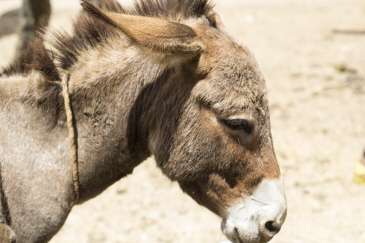How to tell what a donkey is thinking

Yawning, sighing and stretching are just three behaviours observed in donkeys that have been evaluated in newly published research led by academics from the University of Bristol's School of Veterinary Sciences and funded by global equine welfare charity the Brooke.
The research paper reports behaviour patterns of working donkeys in Lahore, Pakistan and the consistency of those behaviours. It confirmed that the donkey, which has a reputation as one of the most stoic of animals, in fact has a large behavioural repertoire.
There has long been a lack of scientific evidence relating to donkey behaviour, which is very different from that of horses or other equines. This lack of evidence can make it difficult to reliably address a donkey's welfare needs. Researchers will use the findings of this work to investigate how to analyse the different behaviour traits, start to identify emotional state and, importantly, to identify whether the animal is in pain.
The research builds on preliminary work to document donkey behaviour and the Brooke will apply the findings to improve assessment of donkey welfare in the countries in which it works. The Brooke regularly conducts objective welfare assessments on donkeys, horses and mules in the countries in which it works, to establish what welfare issues are present, and as part of creating effective projects to address them.
Melissa Upjohn, Research Coordinator for the Brooke said; "Our team in Pakistan were so pleased to work with the University of Bristol on this project, and it provides vital information that we will incorporate into our assessments. A lot of the process involves observing a donkey before approaching it in order to see it act naturally, and so these identified behaviour patterns are exactly what we need to inform the work of our field staff in improving donkeys' welfare and advising their owners on how best to help their animals."
More information: Regan FH, Hockenhull J, Pritchard JC, Waterman-Pearson AE, Whay HR (2014) "Behavioural Repertoire of Working Donkeys and Consistency of Behaviour over Time, as a Preliminary Step towards Identifying Pain-Related Behaviours." PLoS ONE 9(7): e101877. DOI: 10.1371/journal.pone.0101877
Journal information: PLoS ONE
Provided by University of Bristol


















